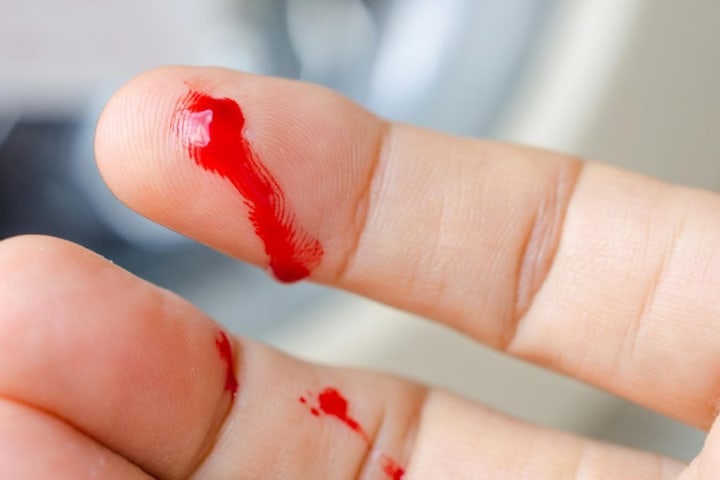You're Gonna Need A Bigger Boat
Shark Attack Tips

Surf’s up! July 14th is Shark Attack Awareness Day. According to a recent report done in 2021, sharks have bitten 112 people, resulting in six deaths. On average, 6-8 people die a year in shark attacks. Despite sharks being portrayed as evil flesh-eating monsters, many try to avoid people as best as they can. Here are some tips for the next time you go to the beach and have a confrontation with nature’s oldest living water creature.
You Are Not A Snack

Sharks do not find humans as appetizing as we think they do. Scientists who have studied their diets found out that humans are not on their food pyramid. They often find us too bony and with not enough meat and fat to satisfy their hunger. The reason they snap at us is their mouth is a sensory organ. They often use it to explore what they find in the water to see if it has the same fat content as their favorite food or not. When most people have an encounter with a shark, they feel pressure on that area before they feel teeth. The pressure is a test bite to determine if you are worth eating. Once they determine you are a friend and not food, they will release you and swim away to find real prey.
Punch The Nose

This is an old myth passed down for many years. The theory goes if a shark is attacking you; you punch its most sensitive body part, the nose. This is a terrible idea. First, the nose is not the most sensitive body part of the shark, that would be the eyes and gills. If you have a sharp weapon on you, stabbing the top of the shark doesn’t work either, because the skin here is inches thick. The weapon would most likely break before it even penetrates it. Aim for the underbelly which will be where the skin is thinnest. Next, you won’t be able to gather enough speed underwater to strike the nose with enough force to harm it. Another downside to punching it in the nose as this will make the shark think of you as a threat, and that the fight is on. A fight you won’t win.
The Smell Of Blood

Another common myth that has been said for years is that sharks can smell a drop of blood and hunt that person down. True sharks can smell blood a quarter of a mile away, but it’s more complicated than that. Sharks have an enlarged olfactory bulb inside their nose, which gives them an amazing sense of smell. This is what they used to hunt down weak and wounded prey to eat. When a shark smells blood, it needs to determine if it’s even worth hunting it down. There are tons of bleeding animals in the ocean they could feast on. The shark needs to decide which one is going to take the least amount of energy to catch and eat? Another factor is distance. If a half-dead bleeding fish is closer to the shark, then it will mostly like to go for that instead of you and your paper cut.
Shiny and Bright Is Not Alright

Now, this myth is actually real. According to National Geographic, sharks are attracted to high-contrast colors, like yellows and oranges, and shiny objects. This is because these colors remind them of fish commonly found where you are currently swimming. The reason is fish are brightly colored so they can blend into their common habitat, the coral reefs. Over 4,000 species, or 25%, of marine life, call this place home. Despite having 20/20 vision, sharks still make mistakes while hungry. By blending into their homes, sharks have difficulty finding prey, and can easily mistake you for a fish dinner if you look like one. Another way sharks can mistake you for food is by wearing shiny jewelry. These often reflect on the sunlight catching the shark’s eye the same way scales do. So, leave the bling at home.
When A Shark Does Attack!

The best way to survive a shark attack is to remain calm. Most people who are attacked by sharks die from drowning than the actual bite. This is because the shark will pull you under while seeing if you are food. Sharks can’t smell fear, but what they can do is detect movement. If you become frantic or failing around, the shark will mistake you for food and chop down. Staying calm while keeping your movements to a minimum will let the shark know you are not food, and they’ll let you go within a few seconds. Once you feel their teeth in your flesh, start punching the shark into letting you go by aiming for the weak spots mentioned earlier. When the shark lets you go swim for the shore, and don’t stop until you hit land. Try not to look too injured while swimming towards the shore because the shark may come back for round two. Once you arrive at the beach, you or someone in your party should call 9-1-1 while elevating the injury over your heart to slow the bleeding.
About the Creator
M.L. Lewis
Welcome to my little slice of pie. This blog will primarily focus on prepping and homesteading skills with a sprinkle of fiction every now and then.






Comments
There are no comments for this story
Be the first to respond and start the conversation.